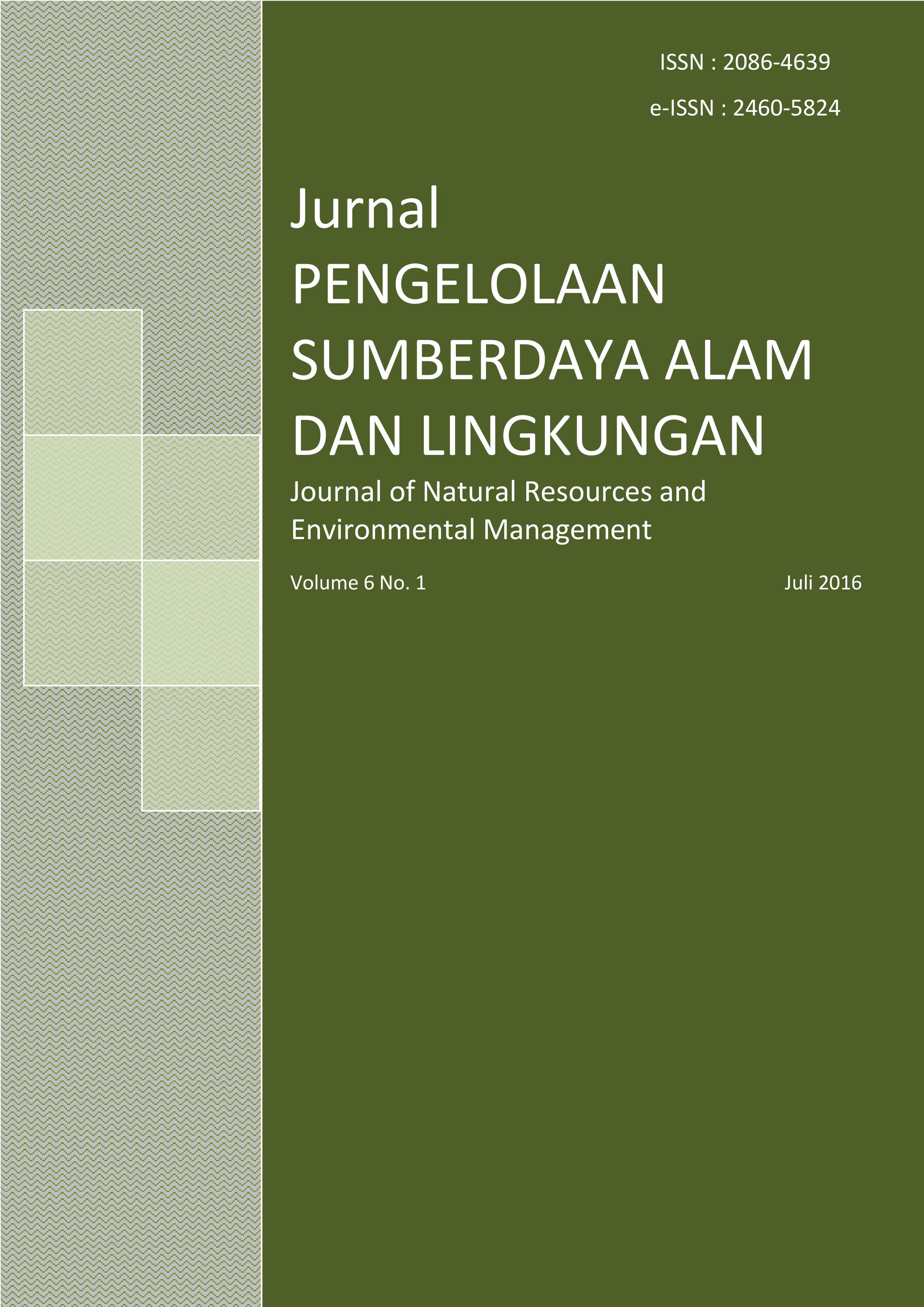KEBUTUHAN HUTAN KOTA BERDASARKAN EMISI KARBONDIOKSIDA DI KOTA PRABUMULIH PROVINSI SUMATERA SELATAN
Abstract
References
Dachlan, E. N. 2007. Analisis kebutuhan luasan hutan kota sebagai sink gas CO2 antropogenik dari bahan bakar binyak dan gas di KotaBogor dengan pendekatan sistem dinamik. Disertasi. Institut Pertanian Bogor, Bogor.
Dachlan, E. N. 2011. Kebutuhan luasan areal hutan kota sebagai rosot (sink) gas CO2 untuk mengantisipasi penurunan luasan ruang terbuka hijau di Kota Bogor. Forum geografi 25 (2), pp 164-177.
Grey, G. W., F. J. Denake, 1978. Urban Forestry. John Wiley and Sons, New York.
[IPCC] Intergovernmental Panel on Climate Change. 1996. Revised 1996 IPCC guidelines for national greenhouse gas inventories workbook. [terhubung berkala]. http://www.ipccnggip.iges.or.jp/public/gl/invs5.html [06 Juli 2015].
[Kepwako] Keputusan Walikota, 2010. Keputusan WaliKota Prabumulih Nomor: 202/KPTS/PERTA/2010 tentang penunjukan lokasi hutan kota prabumulih.
Monteny, G. J., C. M. Groenestein, M. A. Hilhorst, 2001. Interactions and couplingbetween emissions of methane and nitrousoxide from animal husbandry. Nutr. CyclingAgroecosyst 60, pp. 123-132.
Kreuzer, M., C. R. Soliva, 2008. Nutrition: key to methane mitigation in ruminants. Proc. Soc. Nutr. Physiol 17, pp 168171.
[PP] Peraturan Pemerintah, 2002. Peraturan Pemerintah Nomor 63 Tahun 2002 tentang hutan Kota.
Qodriyanti, N. 2010. Analisis distribusi dan kecukupan luasan hutan kota sebagai rosot karbondioksida dengan aplikasi sistem informasi geografi dan penginderaan jauh di Kota Pematangsiantar, Sumatera Utara. Skripsi. Institut Pertanian Bogor, Bogor.
Ruslan, M., B. Rahmad, 2012. Kajian Ruang Terbuka Hijau dalam rangka pembentukan hutan kota di Banjarbaru. Jurnal Hutan Tropis 13 (1).
Septriana, D., A. Indrawan, E. N. Dahlan, I. N. S. Jaya, 2004. Prediksi kebutuhan hutan kota berbasis oksigen di Kota Padang, Sumatera Barat. Jurnal Manajemen Hutan Tropika 10 (2), pp 47-57.
Tinambunan R. S., 2006. Analisis kebutuhan ruang terbuka hijau di Kota Pekanbaru. Tesis. Sekolah Pascasarjana, Institut Pertanian Bogor, Bogor.
Wardhana, Y. M. A., 2009. Estimasi kebutuhan hutan kota di kotamadya jakarta pusat. Tesis. Sekolah Pascasarjana, Institut Pertanian Bogor, Bogor.
Yuliasmara, F. A. Wibawa, 2007. Pengukuran karbon tersimpan pada perkebunan kakao dengan pendekatan biomassa tanaman. Warta Pusat Penelitian Kopi dan Kakao Indonesia 23 (3), pp 149-158.
Authors
Authors who publish with this journal agree to the following terms:
- Authors retain copyright and grant the journal right of first publication with the work simultaneously licensed under a Creative Commons Attribution License that allows others to share the work with an acknowledgement of the work's authorship and initial publication in this journal.
- Authors are able to enter into separate, additional contractual arrangements for the non-exclusive distribution of the journal's published version of the work (e.g., post it to an institutional repository or publish it in a book), with an acknowledgement of its initial publication in this journal.
- Authors are permitted and encouraged to post their work online (e.g., in institutional repositories or on their website) prior to and during the submission process, as it can lead to productive exchanges, as well as earlier and greater citation of published work (See The Effect of Open Access).






